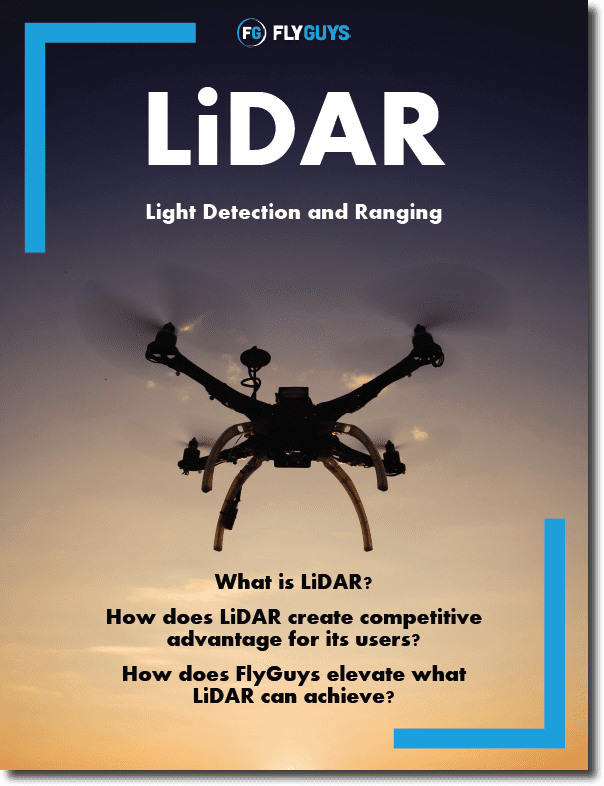Advantages and Disadvantages of LiDAR Technology
The need for 3D imaging and the expansion of drone technology has led to rapid growth in LiDAR technology. While this technology offers a lot of advantages, it’s important to be aware of and understand, the limitations of LiDAR. We’re sharing these advantages and disadvantages to help you know whether it’s right for your project and what you can expect.
Understanding LiDAR Technology
LiDAR is light imaging detection and ranging. Invented in the mid-70s by the US military and NASA to measure distance in space, it became essential for creating accurate maps on earth. By the 1990s, it was used commercially, though on a limited scale.
So, how does it work? It sends out laser light pulses and measures the time it takes the light to hit the object and bounce back to the sensor. The pulses are sent out in nanoseconds, creating a high speed way to scan areas and get thorough, highly accurate 3D images to create elevation maps and more.
LiDAR technology is used in many different industries including land development, forestry, mining, construction, surveying, and more.
Advantages of LiDAR Mapping
First, let’s look at the advantages to using LiDAR.
Accuracy
Above all, LiDAR technology offers incredibly accurate, consistent results. The short wavelength can even detect small objects and create exact 3D models, making it possible to determine what the objects are, whether it’s a tree, person, or wall.
Speed
The sensor sends out laser pulses and receives them back in nanoseconds, making it possible to scan large areas in a fairly short period of time and still get a high volume of data.
Can Collect From a Variety of Locations
Places that are inaccessible, such as high mountains, dense forests and hard to reach areas can be easily mapped with LiDAR technology.
Automated Functionality
LiDAR technology consists of primarily automated processes, and while experienced pilots are necessary to operate the equipment, it’s more efficient than other methods of surveying that require more hands-on involvement.
Low Cost
Given the speed and large area that can be scanned coupled with the highly accurate results, LiDAR is significantly less expensive than other methods of land surveying and mapping. It is an affordable way to produce complex topographical surveys.
Disadvantages of Using LiDAR
Speed, cost, and the sheer volume of highly accurate data tend to make LiDAR the right option, but it’s important to know the disadvantages as you plan its use.
Requires Experience to Operate
It takes previous surveying experience to take check shots, run base stations, and check-in to benchmarks. The LiDAR is complex in nature and requires a deep understanding of the sensor.
Purchasing High-End LiDAR Sensors Are Costly
If you are trying to set up your own LiDAR shop it requires heavy investment into the LiDAR sensor and the personnel.
Schedule a Free Consultation for LiDAR Services
Interested in LiDAR services? We offer highly accurate mapping data through LiDAR technology. With experienced professionals and fast turn-around for data, we can minimize disadvantages and maximize the advantages so you get information you can count on. Contact us now for a free consultation or quote by calling us at 1 (888) 837-0940 or fill out the form below to get your LiDAR project started.
Download LiDAR Report
Learn about LiDAR in this free download. Discover complete information on:
– How LiDAR works and what it’s used for
– How LiDAR helps further business objectives
– What sets FlyGuys’ LiDAR service apart

